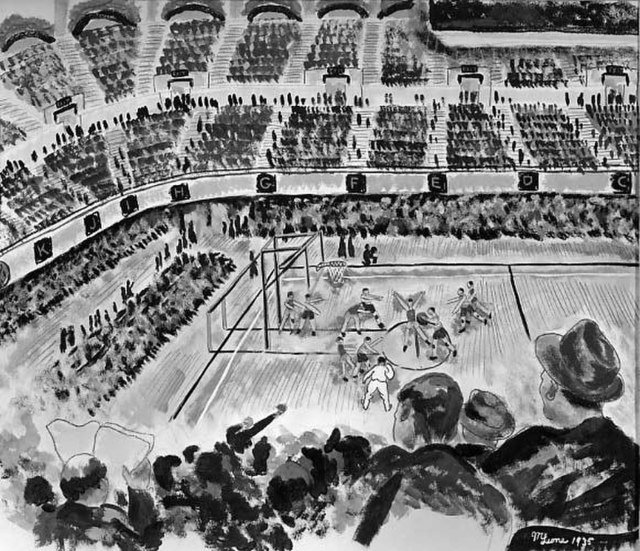Sports as Technique
/Near the end of The Technological Society (which, yes, I’m finally almost finished with), Jacques Ellul indulges in something like a rapid fire round, where he jots down some thoughts about the effects of technique as applied to various sectors of society. Along with more obvious suspects like medicine and propaganda, Ellul includes sports as among those aspects of society subject to the ever tightening screws of technique.
In fact, Ellul views sport as inextricably tied to technique from its beginnings. And he does seem to be right about this assertion: aside from a few scattered religious/ceremonial exceptions in the ancient world, sport as an organized force in the world only emerges with industrial society, when humans’ interactions with the world became less spontaneous and more regimented. Work in industrial settings forecloses traditional means of exercise, which must then be replaced by something; and what better than a form of exercise that carries with it notions of regimentation?
What’s interesting to me as a sports fan (Ellul’s own distaste for sport is palpable throughout the section), is the extent to which the origin of sports as a technique in their own right has been mimicked in recent years by a push within most major sports toward technique as a way of life. I will speak here primarily of basketball, since that is the sport I follow most closely - and also, unrelatedly but conveniently, the sport that prides itself most vocally on its “forward thinking” stances both on and off the court.
Over the past 10 years this progressive push has manifested itself in a style of play that increasingly emphasizes efficiency as the end all be all. Certain players have become notorious for exploiting the quirks of the game in order to become scoring machines… emphasis on machines. James Harden is perhaps the most infamous example of this style of play, that stresses ball dominance and a healthy mix of 3 point shots and drives to the basket, drives designed more to elicit fouls than to score layups. Like a video game cheat code, this style of play “games the system” to create intense advantages.
The style also, according to some at least, robs the game of its fundamental beauty. There’s a numbing repetitiveness to watching a player like Harden or Luka Dončić at work, even when you recognize the extreme skill that goes into their method. Basketball by algorithm, if you will, where human judgement takes a backseat to a series of precalculated moves.
Maybe these quibbles are overblown, but I’m fascinated by the ways in which the search for competitive advantage has led teams down paths that produce basketball that viewers perceive and receive as aesthetically null and void. This same drive for technical efficiency seems to pervade basketball media as well. I’m not only thinking here of the sort of groupthink that will tend to pervade any cohort, and which manifests itself on NBA Twitter as a calcified set of propositions that cannot but be affirmed. I’m also thinking of the business itself, where figures like Adrian Wojnarowski and Shams Charania press on advantages to strengthen their iron grip on the newsbreaking game. (If you’re interested in sports, media, and high drama, I heartily recommend Ethan Sherwood Strauss’ Substack, where he writes about sports media with incisive insights). The results of this method — lots of “first in” reporting, but more heat than light — work to further pressurize the NBA environment.
We’ll see where all this goes. For a certain type of data head, it’s no doubt thrilling to trace the technique all the way down, from the NBA messaging apparatus at commissioner Adam Silver’s fingertips, through ESPN’s machination-filled maneuvering, down to the practice courts where players are training to shoot from only the exact right spots on the court. The only question: will anyone still be watching when “man himself becomes a machine”?

